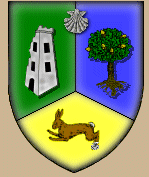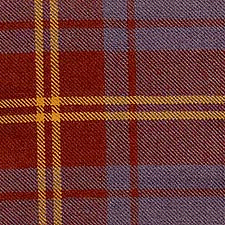 |  |  |
|
|
|
|
Sligo Web First and Largest Internet Directory for Sligo
Helping you learn about Sligo County |

|
The Sligo Coat of Arms would seem to
date back to 1612, but I am not too sure if
this is fact or fiction. The Arms of Sligo
itself has changed over the last three
centuries or so, but all have had the same
theme which are:
The ruined tower which represents that of Sligo Abbey. The tree symbolises the dense woodland that once covered the site of the Town. The hare in flight is a natural concomitant of brushwood abounding with game and wildlife. The oyster shells emphasise the fact that the "Slilgeach" river is so named because of its abundance of oyster shells. In 1952 the Corporation requested the Genealogical Office to undertake the design of a heraldically correct form of the traditional Arms of Sligo. The Blazon, or description, of the resulting emblem, is as follows: Per Pale Vert and azure, on the dester a ruined square tower, on the sinister an oak-tree eradicated, both proper, on a point or a hare courant, attached to the hind foot thereof an escallop, all of the third, in centre chief an escallop argent. |
|
In 1980 Sligo County Council adopted its
own emblem, as distinct from that of the
Borough. The blazon of the Arms depicted
on the shield, prepared by the
Genealogical Office, is as follows:
The tinctures stable and agent (black and white in practical usage) are predominant and representation of the name of the County - Sligeach - (an escallop shell) is effected by sprinkling the field of the shield with escallops (the escallop is a herldic charge for long standing).
In the upper part of the shield is
placed an open book, with on the
dexter (right hand side) a red rose.
The design represents collectively
the literary and cultural history of the
County - the cross referring to such
early material as the Book of
Ballymote and Lecan, and the rose
to the poetry of W.B. Yeats, in whose
work the red rose was s significant
theme.
In the lower part of the shield is
placed a boar's head, in recollection
of the esisode of Diarmuid and
Gráinne. |

|

|
The Sligo Tartan |
|
Dr. Dubhglás de hÍde
(Dr. Douglas Hyde) (1860-1949) Born in County Sligo, Dr. Hyde was raised in Frenchpark, Co. Roscommon. He was educated at Trinity College, Dublin. A renowned Gaelic scholar, he played a leading role in the revival of the Irish language and was co-founder of the Gaelic League in 1893. Dr. Hyde was a distinguished author, playright and poet, publishing works in English and in Irish, the latter under the name "An Craobhín Aoibheann". He was Professor of Modern Irish at the National University (1909-'32) and Dean of the Faculty of Celtic Studies. Dr. Hyde was also a member of the Senate of the National University of Ireland (1909-'19), Seanad Eireann (1925-'38), chairman of Irish Folklore Institute (1930-34). He was President of Ireland from 1938 to 1945. |
|
O'Higgins, Ambrosio
Pronunciation: [Ohig´inz, Span. ämbrO´syO OE´gEns] 1720? 1801, Spanish colonial administrator, b. Ballinary, Co. Sligo, Ireland. Educated at Cádiz, Spain, under the care of his uncle, who was a Jesuit, he went to South America as a trader. After an adventurous career he so distinguished himself in campaigns against the Araucanians that he was appointed (1789) governor of Chile. He was later made marquis of Osorno and served capably as viceroy (1796 1801) of Peru. Bernardo O'Higgins was his son. |
|
Cockran, William Bourke
1854 1923, American political leader, b. Co. Sligo, Ireland. He emigrated to New York City at the age of 17 and in 1876 was admitted to the bar. At first opposed to Tammany Hall, W. Bourke Cockran later joined (1883) the organization, although he subsequently remained independent in action. He supported the gold standard and William McKinley in 1896, anti-imperialism and William Jennings Bryan in 1900, and Theodore Roosevelt's Bull Moose ticket in 1912. As a member (1887 89, 1891 95, 1904 9, and 1921 23) of the U.S. House of Representatives, Cockran was a supporter of organized labor and an opponent of restrictions on immigration. He defended Thomas J. Mooney in 1918. |
|
Sir George Gabriel Stokes
Stokes from Skreen Co. Sligo, established the science of hydrodynamics with his law of viscosity (1851), describing the velocity of a small sphere through a viscous fluid. |
|
Brahm Stoker
Stoker's taste for the unusual could have begun to germinate early in his childhood where unexplained illnesses kept him bedridden. There his imagination could soar. In addition to reading he could and would listen to his mother tell her tales of Ireland's own folklore and legend. One of her stories directly influenced at least one of Stoker's short works - "The Invisible Giant" - a story based on the telling of Stoker's mother about the 1832 Sligo cholera epidemic which legend tells of cases of premature burial and the deadly suspicion of strangers. |
|
US Civil War Medal of Honor Recipient HUDSON, MICHAEL
Rank and organization: Sergeant, U.S. Marine Corps. Born: 1834, Sligo County, Ireland. Accredited to: New York. G.O. No.: 45, 31 December 1864. Citation: On board the U.S.S. Brooklyn during action against rebel forts and gunboats and with the ram Tennessee in Mobile Bay, 5 August 1864. Despite severe damage to his ship and the loss of several men on board as enemy fire raked the decks, Sgt. Hudson fought his gun with skill and courage throughout the furious 2-hour battle which resulted in the surrender of the rebel ram Tennessee. |

|
Edward P. Doherty
Birth Date: 1840 On April 24, 1865, the Sixteenth New York Cavalry, a detachment of 26 men under the command of then Lieutenant Edward. P. Doherty from Sligo, was sent from Washington in pursuit of John Wilkes Booth, who on the 15th of April of the same year assinated Presidet Abraham Lincoln. |